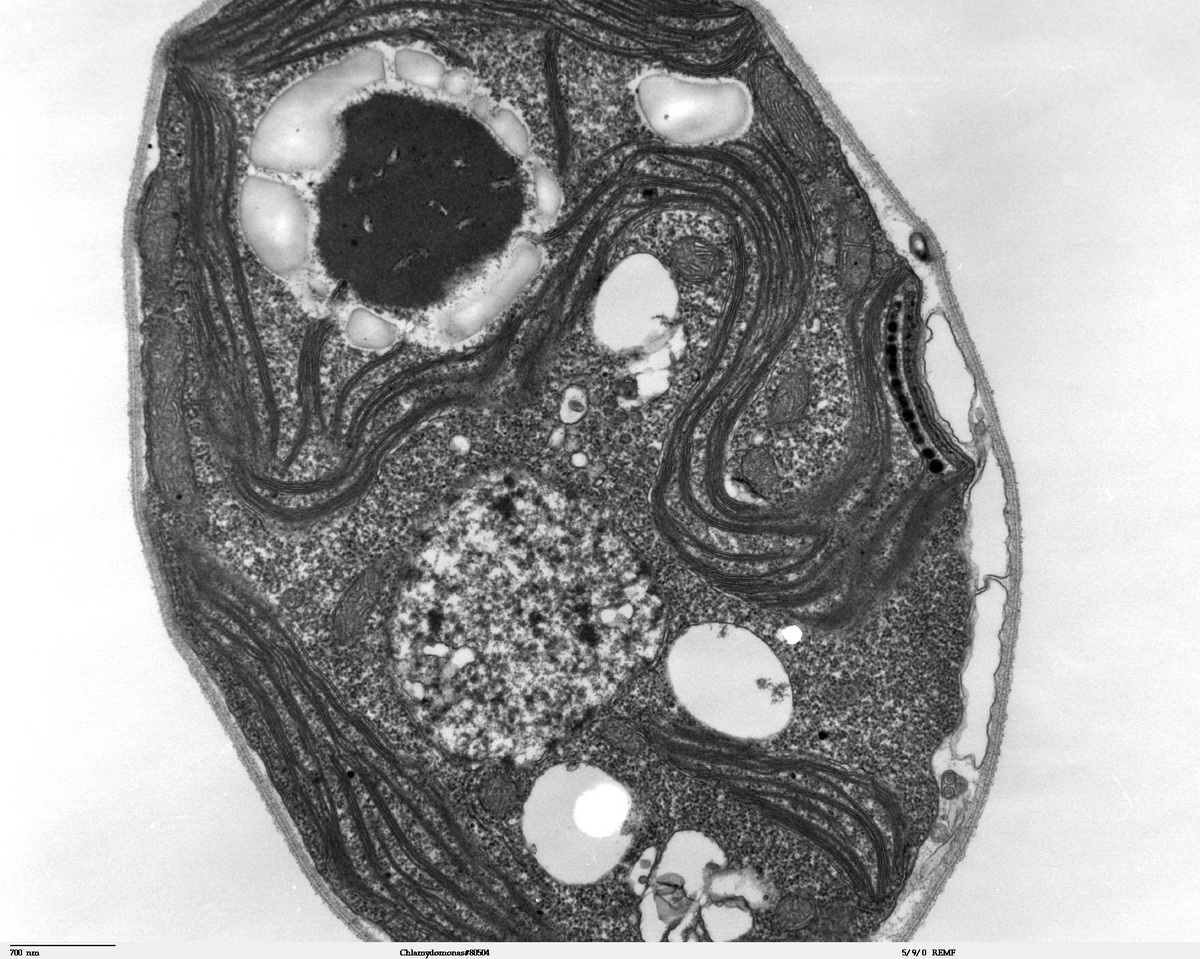
Scientists Find Missing Link in Algal Photosynthesis
August 7, 2019| |
Photosynthesis is the process by which plants and algae capture sunlight and fix carbon dioxide into energy-rich sugars that fuel growth, development, and in the case of crops, yield. Algae evolved specialized carbon dioxide concentrating mechanisms (CCM) to photosynthesize much more efficiently than plants. A team of scientists from Louisiana State University (LSU) and the University of York discovered a previously unexplained step in the CCM of green algae, a key to developing functional CCM in food crops to boost productivity.
James Moroney, professor at LSU and member of Realizing Increased Photosynthetic Efficiency (RIPE) said their goal is to engineer a CCM in crops to surround Rubisco—the enzyme that drives photosynthesis—with more carbon dioxide to make it more efficient and less likely to grab oxygen molecules. The green algae Chlamydomonas reinhardtii transports bicarbonate across three cellular membranes into the compartment that houses Rubisco, called a pyrenoid, where the bicarbonate is converted back into carbon dioxide and fixed into sugar.
Ananya Mukherjee, who led this work as a graduate student at LSU said that before these findings, they did not understand how bicarbonate crossed the third threshold to enter the pyrenoid. It turns out that three transport proteins involved in this step were the missing link in understanding the CCM of C. reinhardtii.
For more details, read the news article on the RIPE website.
| |
You might also like:
- Rice Plants Engineered for Better Photosynthesis Make More Rice
- New Type of Photosynthesis Discovered
- GM Events in ISAAA GM Approval Database with Enhanced Photosynthesis/Yield
Biotech Updates is a weekly newsletter of ISAAA, a not-for-profit organization. It is distributed for free to over 22,000 subscribers worldwide to inform them about the key developments in biosciences, especially in biotechnology. Your support will help us in our mission to feed the world with knowledge. You can help by donating as little as $10.
-
See more articles:
-
News from Around the World
- International Treaty on Plant Genetic Resources for Food and Agriculture Turns 15
- Plant Breeding Innovation Can Help Solve Global Challenges
- Iowans Prefer Presidential Candidates Who Support Science
- Scientists Find Missing Link in Algal Photosynthesis
- UK Farmers Endorse Adoption of GM Crops, Survey Reveals
-
Research Highlights
- Insect Resistant Rice Had No Effect on the Interspecific Interactions of Rice Planthoppers
- Mechanism to Improve Stress Tolerance in Plants Identified
- Scientists Identify Genes that First Enabled Plants to Grow Leaves
-
Plant
- Better Resistance to Citrus Canker Achieved Using CRISPR-Cas9-mediated Editing
- CRISPR-Cas9 Used in Mutagenesis of Soybean Seed Storage Protein Genes
-
Read the latest: - Biotech Updates (December 17, 2025)
- Gene Editing Supplement (December 17, 2025)
- Gene Drive Supplement (February 22, 2023)
-
Subscribe to BU: - Share
- Tweet

